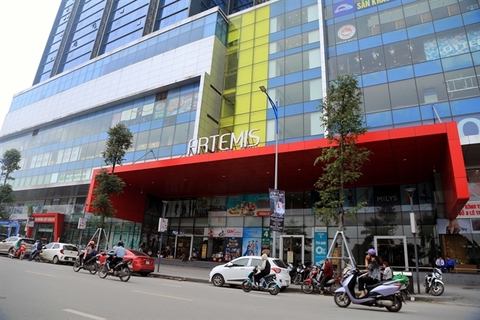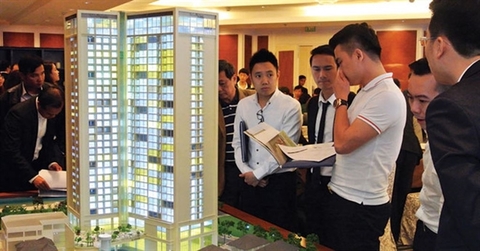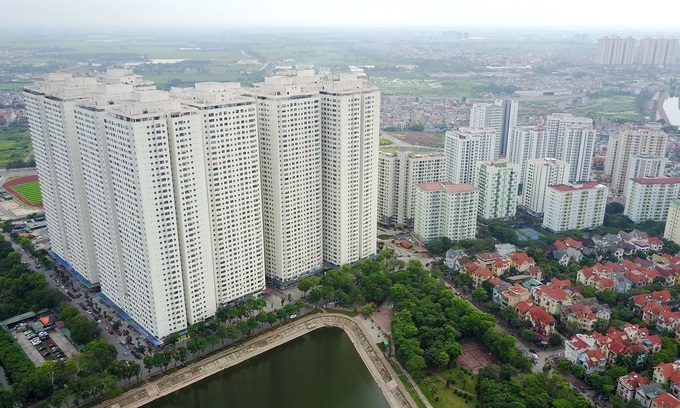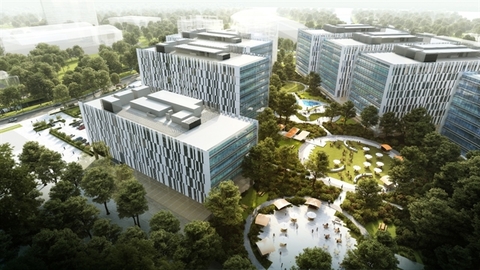American realtors look to a Vietnamese future
American realtors look to a Vietnamese future
Although US developers are not in the leading position in Vietnam’s property market yet, many have been indirectly investing in the market, especially within the industrial segment.
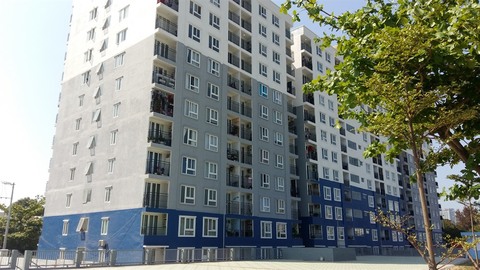
Since beginning to work as the US Ambassador to Vietnam in November 2017, Daniel Kritenbrink has been witnessing a rise in US investment in the Southeast Asian nation, including the development of smart cities here and US investors are also connecting with other smart cities across Southeast Asia.
“The US will provide support to realise these ambitions by developing infrastructure for smart cities. This will be a promising and fair playground for all investors. If legal documents create enough favourable conditions for investors, Vietnam will become a prosperous and dynamic economy,” said Kritenbrink at the International Real Estate Conference recently held in Hanoi.
For example, the US-Vietnam Smart Cities Industry Group (UVSCIG) provides public and private sectors with an opportunity to engage with Vietnam to learn about smart cities’ objectives and unique needs. “It also showcases to local officials and businesses not only some of the best technologies and services but also US investors’ desire to develop relationships in Vietnam that can create advantageous solutions for cities, industries, and most importantly, the citizens,” Kritenbrink told VIR.
The UVSCIG is planning to help Vietnam managing its urban infrastructure more efficiently. The group currently represents nearly 40 US companies, four US government agencies and departments, and two US business associations (AmCham Vietnam and the US-ASEAN Business Council). Company members cover a broad range of solutions and expertise, including urban planning, software, hardware, and wastewater technology.
Over the past 10 months, the US mission has organised six dialogues between the UVSCIG and cities across Vietnam. In August 2018, the UVSCIG completed a “Smart Cities Roadshow” that included stops in many localities in Vietnam, such as Nha Trang, Danang, Hue, Ho Chi Minh City, Hanoi, and Can Tho. The dialogues in each location provided opportunities for the industry group to meet government officials and project owners to share best practices and proposals for planning and building smart cities.
Partnerships in key zones
The private sector has also shown interest in the development. As such, PHI Group was the latest US holding company that decided to establish solid operations in the real estate market of Vietnam. Recently, PHI signed a memorandum of understanding (MoU) for comprehensive co-operation to partner up with Hanoi MHD Invest JSC.
According to the MoU, PHI will assist MHD to become a publicly traded company in American or international stock markets. PHI will engage MHD for the execution of its building projects in Vietnam. It will also jointly develop and implement various real estate projects, and provide construction materials with new technologies to the Vietnamese market.
Before PHI, in 2018, BW Industrial Development JSC (BW Industrial), a joint venture between the US private equity fund Warburg Pincus and Vietnam’s Becamex IDC, had commenced operations in the southern province of Binh Duong. With over two million square metres of industrial land and $200 million in initial capital, BW Industrial is considered the largest supplier of industrial properties and logistics services in Vietnam in key economic zones in the north and south.
Assessing the Vietnamese real estate market, Vince Malta, first deputy president of the US National Association of Realtors, said that the country is very active with rapid development, and offers many opportunities for foreign investors.
“Even though foreigners not yet familiar with the country’s legal system, there is a remarkable development at both private and state-owned sectors. Foreign investors are catching up with the market’s movement and impacts effected from the changes in policies and regulations. Foreign investors are eager to invest in Vietnam,” Malta said.
Meanwhile, Furhad Waquad, a US real estate broker and consultant from Max Broock Realtors, said that the luxury segment of Vietnam’s real estate market could not be in equal competition with other regional countries.
“If Vietnam can keep up its recent economic development and policy improvement, domestic and international investors will pour large sums into this country,” Waquad said.
Vietnam, according to Waquad, has a long and beautiful untouched by tourism development. Therefore, the country’s potential for real estate in general and tourism property is huge.
However, it is not only Vietnam that is attractive for US investors, Vietnamese investors and buyers are also taking many interests in US assets.
According to Steven Lawson, business director for Asia of the US’ property firm Lennar International, the steady growth of the Vietnamese economy and the rise of the Vietnamese upper class are factors that stimulate investment flows from Vietnam to abroad including the US.
“Lennar International has started its first business plan in Vietnam with several partners, including Interhome, and we have realised that the demand for buying houses from overseas Vietnamese, especially in the US, is enormous,” Lawson told VIR. “Vietnamese investors are very sophisticated and wise in their investments, and real estate in the US is currently meeting all the needs of Vietnamese investors.”
Improvements necessary
Foreign investors, especially from the US, are becoming interested in the Vietnamese real estate market because many issues within the legal system have been improved. As such, a range of incentives on overseas investment as well as policies for foreigners to buy property in Vietnam have been created and put into force.
Moreover, the market offers a stable political climate, a continuously developing economy and a fast-growing middle class which is estimated to occupy around 50 per cent of the total population in the next couple of years. However, the country still needs to concentrate its efforts further on improving policies and the business environment to be more attractive for international investors.
According to Lieu Nguyen, global ambassador to Cambodia, Indonesia and Vietnam from the US National Association of Realtors said, “We should have policies and incentives to encourage foreign investors to invest in Vietnam, and more importantly, to encourage them to recycle their investment right here in Vietnam.”
Along with that, foreigners are now facing difficulties on how to transfer their profit from Vietnam to their home country.
On the flip side, however, some Vietnamese in the real estate market are also finding ample business opportunities in the US. “Many Vietnamese people are currently investing in the US Bay area, southern California, or Texas because there are larger Vietnamese communities in these locations. Many Vietnamese are seeking to invest in the US as a safe haven,” said Lieu.
Experts have expressed that the Vietnamese market should diversify so that it can drive more foreign interest, which currently seems to be high in luxury housing, tourism property, and industrial property.
Graeme Latta, a consultant at the US’ Show Vegas Realty, said that many wealthy Americans are looking for places which offer satisfying conditions for their high standard of living, such as a nice environment, a low level of taxation, and a comfortable transport system.
“Vietnam has the potential to become one of the favourite destinations for US investors if it can meet all the above factors. To achieve this, the Vietnamese real estate market has to diversify its segments to meet the sophisticated demands of the US investors which have been increasing annually,” Latta said.
According to the Vietnamese Ministry of Construction, the Vietnamese real estate market has been developing fast, changing urban landscapes, and raising living standards all over the country.
Since 1999, Vietnam has developed on average more than 70 million square metres of housing each year. The country’s housing area is estimated to have a total of 2.1 billion sq.m, which indicates a development in per capita housing area from 9.7sq.m in 1999 to 23.7sq.m in June last year.




